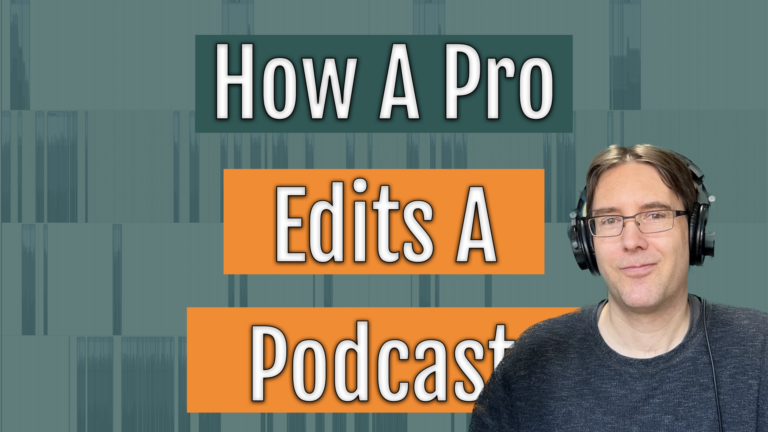It’s easy to forget that achieving professional-sounding podcast audio can still feel like a mystery for many creators. I often come across posts from people wondering how to capture that polished sound they hear on their favorite shows. The good news is that achieving good audio quality is easier than ever. The days of needing to be an audio engineer are long gone.
But before we jump into the tips, let’s address the importance of audio quality. You have a limited window to make a good first impression on a new listener. If your audio quality doesn’t meet their expectations, they’ll likely hit the stop button before they even get a chance to experience your content. Additionally, good audio quality aids in listener retention and boosts your credibility.
So, let’s get started on those five ways to improve your podcast audio.
1. Your Mic: The Foundation of Good Audio
Audio quality begins at the recording stage. If you’re relying on the built-in mic on your phone, laptop, or webcam, or even using a condenser mic like the Blue Yeti in a less-than-ideal space, upgrading to a decent external microphone is the single most impactful change you can make.
Dynamic mics are more forgiving of imperfect recording environments, while condenser mics tend to magnify any sonic imperfections in your space.
2. Mic Position: A Few Inches Make All the Difference
Mic placement is crucial, yet often overlooked. Even a slight change in distance can dramatically alter your sound. As demonstrated in the accompanying video, moving the mic just a few inches away can make your voice sound distant and introduce more room ambiance. Ideally, dynamic mics should be positioned 1 to 4 inches away from your mouth, depending on your speaking volume.
3. Clean Up Your Audio: Removing Noise and Reverb
Various tools are available to help you clean up your recordings. My go-tos are Accentize dxRevive Pro and Supertone Clear. They’re both plugins offering noise and reverb reduction that’s effective. Clear is more affordable, but dxRevive Pro can perform better when you need something a little stronger.
In the video, you can see how I use Supertone Clear to reduce reverb and background noise in a recording made in a large, echoey office space. By carefully adjusting the plugin’s controls, we can significantly improve the audio quality without introducing noticeable artifacts.
If you’re not using a DAW or a program that supports plugins, options like Descript’s Studio Sound, Riverside, and Adobe’s audio cleanup tools are available, but their effectiveness can vary. The one that caught my attention when I did this video where I compared the 9 most commonly used noise and reverb reduction tools was Auphonic.
4. Mix Your Audio With AI-Powered Smart Plugins
Mixing can add that professional touch to your audio. However, many podcasters feel overwhelmed by EQ and compression, resorting to presets that may not suit their audio.
Sonible’s Smart plugins offer a solution. These plugins use AI to analyze your audio and suggest custom settings. I’ve been using them for almost a year on my clients’ guest tracks, and they consistently deliver excellent results.
In the video, I demonstrate how I use Smart:comp and Smart:EQ to enhance a guest’s audio, quickly adding polish without needing in-depth technical knowledge.
5. Editing: Finding the Right Balance
Editing is a topic that sparks debate, with opinions ranging from “editing makes things sound robotic” to “edit out every imperfection.” The reality lies somewhere in the middle.
Learning basic editing techniques can significantly improve your podcast’s professionalism. For example, removing dead air (the silent parts where the other person is speaking) can make your audio sound much cleaner. If you record in person, editing becomes even more important to manage mic bleed.
While “ums” and other verbal pauses can be a natural part of conversation, they tend to be more frequent in recorded settings. Removing some of them can make your podcast more enjoyable to listen to.
Remember that podcasting is an art form, and there are no hard and fast rules. The key is to ensure your listeners find your audio engaging enough to keep them coming back for more. If you’re unsure about your audio quality or how to improve it, consider reaching out to me. I coach, consult, and mentor podcasters and podcast editors on all things audio. If courses are more your style, check out my community-powered course, Podcast Editing School.
Wrap Up
I hope these tips help you on your journey to producing better-sounding podcasts. Remember, quality audio is essential for making a good first impression, keeping your listeners engaged, and building your credibility as a podcaster.


